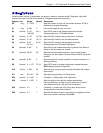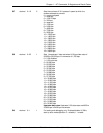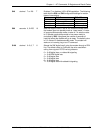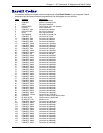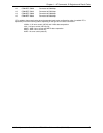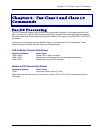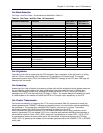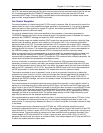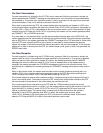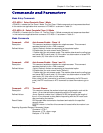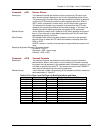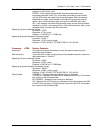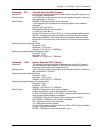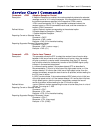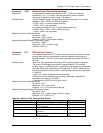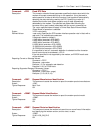
Chapter 2 – Fax Class 1 and 1.0 Commands
Multi-Tech Systems, Inc. SocketModem MT5634SMIxx Reference Guide (S000263C) 36
Fax Data Transmission
Fax data transmission is initiated by the AT+FTM=<mod> command. After this command is issued, the
modem generates the CONNECT message and transmits carrier in the modulation scheme specified by
the parameter n. The modem then transmits constant 1 bits for a minimum of one second and continues
to transmit constant 1 bits until it receives a character from the DTE.
When data is received from the DTE, the modem deletes start and stop bits and deletes all <DLE><chr>
character pairs before transmitting the data to the remote. Each <DLE><DLE> sequence is transmitted as
a single <DLE>. <DLE><ETX> is considered as the end of stream marker, and is not transmitted. All data
received from the DTE after the <DLE><ETX> is ignored by the modem until the modem generates either
the CONNECT, OK, or ERROR result code.
If no more data is in the transmit buffer, and the last transmitted character was not an ASCII NULL, the
modem generates the OK result code and returns to the command mode. If the last character transmitted
was an ASCII NULL, the modem generates the CONNECT message to the DTE and waits for further data
from the DTE while transmitting NULLs to the remote. If more data is received before five seconds
elapse, the modem continues to transmit the data as described in the previous paragraph. If five seconds
elapse and no data is received from the DTE, the modem drops carrier, goes on-hook, and generates the
ERROR result code.
Fax Data Reception
Fax data reception is initiated using the AT+FRM=<mod> command. After this command is issued, the
modem looks for carrier in the modulation scheme specified by the parameter n. If no carrier is detected
before the period of time specified by register S7 expires, the modem generates the NO CARRIER
message and returns to command mode. If a V.21 carrier is detected when a high-speed carrier is
expected, the modem generates the +FCERROR message and returns to the command mode. If the
specified carrier is detected, the modem generates the CONNECT message and enters the data receive
mode.
While in data receive mode, the modem receives data from the remote, adds start and stop bits, and
handles <DLE><chr> character pairs before passing the data to the DTE. The modem prefixes each
<DLE> character with another <DLE> character before sending it to the DTE.
If the modem detects a receive buffer overflow condition, it stops receiving from the remote until there is
room in the receive buffer. The modem informs the DTE of the buffer overflow after it sends to the DTE
the last character that was stored in the buffer before the overflow occurred.
If the modem receives any character from the DTE after the +FRM command (except flow control
characters if software flow control is in effect), or if the modem detects a high-to-low transition of the DTR
signal while &D1 is in effect, it sends <DLE><ETX> to the DTE, generates the OK result code, and
returns to command mode. The receive buffer is cleared and all data received from the remote is
discarded. If loss of DTR is detected while &D2 is in effect, the modem goes on-hook, sends
<DLE><ETX> followed by OK result code to the DTE, and returns to command mode. If the modem
detects a DTR drop while &D3 is in effect, the modem performs a warm reset.



